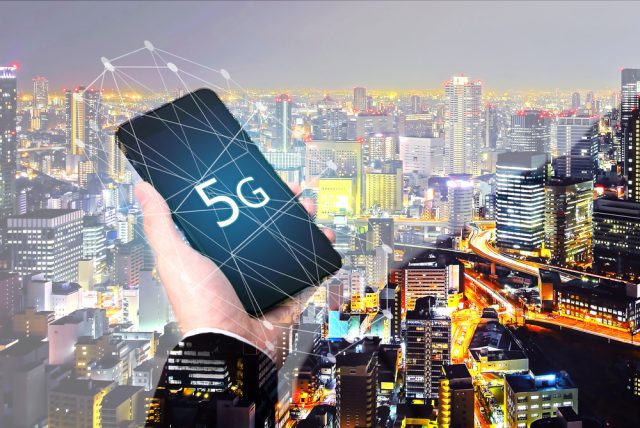5G has arrived: What you now need to know

5G, the latest in mobile technology, strives to make mobile communication better and faster than ever before. However, a challenge 5G has that its predecessors did not, is the amount of devices, not just mobile phones, looking to benefit from the new technology. From smartwatches to internet-connected doorbells to even impending autonomous trucks, each of these devices will be looking to connect to the 5G network.
5G is already in use by several cities across the US with other countries not far behind. In fact, a recently released Ericcson Mobility Report predicted that by the end of 2024, there will be 1.9 billion 5G subscriptions, 35 percent of traffic will be carried by 5G networks and up to 65 percent of the global population could be covered by the technology. So the current questions are not when or what, but who will have access and how secure is it?
Who will have access?
In short, everyone in both cities and rural areas will have access to 5G, but of course, it isn’t quite that simple. Residents of cities who already utilize high-speed access on mobile devices are among those to see even faster, higher-quality frequencies sooner. As of August 2019, eight mobile providers are offering varying amounts of access to 5G from Sprint providing mobile 5G in Atlanta, Chicago, Dallas-Fort Worth, Houston, and Kansas City to C Spire offering fixed 5G services throughout Mississippi. AT&T, Verizon and T-Mobile each aspire to be in a minimum of 30 cities by the end of 2019.
In less-populated areas, 5G has the potential to improve rural broadband. The digital divide is real, and access to bandwidth is a big reason why there is an increasing difference between the haves and the have-nots. There are some tactical challenges, but all of those can be solved with technological scale and regulatory support. Broadband is finally reaching the capability levels it should have always had as access to broadband should be for everyone. A pregnant mother in rural Montana should have the same access to telemedicine as a tech CEO in downtown San Francisco.
How secure is it?
We live in a day and age where we are used to hearing about how great a technological advantage is, which is usually followed by reading the fine print and learning that all of your data is being sold to third parties. While 5G won’t directly try to access your personal information, there are benefits and risks to understand it before leveraging.
The benefits
When it comes to bandwidth, 5G is like having your cake and eating it too. In this case, the cake is double chocolate, no fat. You get the connection speeds of fiber without the tether of a cord. In addition to higher speeds than ever before, from a cybersecurity perspective, you have more bandwidth to build secure applications. Encryption sucks up bandwidth, and 5G allows you to increase the security of the conversation without sacrificing the quality of the transmission.
The risks
While high speeds, quality services and increased security are great, there are some serious issues, especially around network security. 5G pushes bandwidth even higher up the tech hierarchy of needs. This means the network equipment mobile operators use to power 5G has to be secure and impenetrable to malicious attacks by nation-states. This has to start at the supply chain where every aspect of network equipment manufactured is secure, transparent, and predictable. This is the one true 5G challenge yet to be addressed currently facing the industry.
There is definitely still room for improvement on both the access and increased security fronts, but 5G is the technology we need to keep the world connected. We need faster, more responsive wireless technology capable of connecting more devices simultaneously, so rural communities have the same technology access as city centers, enabling the rest of the world to continue on its current trajectory of technological adoption.
Photo Credit: Shaynepplstockphoto/Shutterstock
 TJ Thinakaran cofounded EZ Texting in 2007 and serves as the company’s chief operating officer. Since founding, the privately held company has expanded from 5 to over 180 employees across two continents serving over 160,000 customers. During that time, EZ Texting has expanded through organic growth as well as acquisitions and raised $38M in funding from Morgan Stanley Expansion Capital, Investor AB, and ROCA partners. Prior to EZ Texting, he was at IBM as part of their services group where he consulted with Fortune 500 companies as well as state and federal governments on technical, operational, and organizational issues.
TJ Thinakaran cofounded EZ Texting in 2007 and serves as the company’s chief operating officer. Since founding, the privately held company has expanded from 5 to over 180 employees across two continents serving over 160,000 customers. During that time, EZ Texting has expanded through organic growth as well as acquisitions and raised $38M in funding from Morgan Stanley Expansion Capital, Investor AB, and ROCA partners. Prior to EZ Texting, he was at IBM as part of their services group where he consulted with Fortune 500 companies as well as state and federal governments on technical, operational, and organizational issues.
